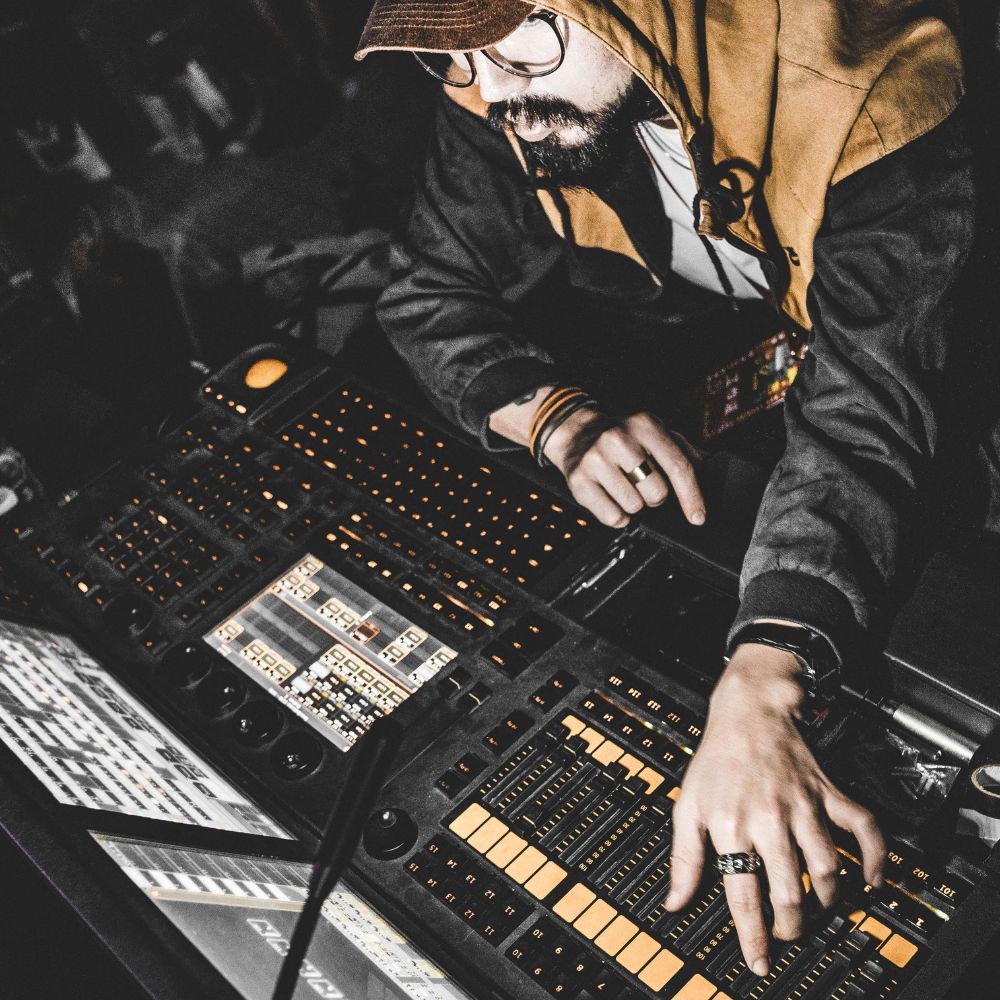How to Record Drums: A Guide for Beginners

As professional drummers and recording engineers, we've had the opportunity to record drums for various projects over the years. In this article, we'll share our experience and knowledge on how to record drums effectively. From choosing the right space to post-production tips, you'll learn everything you need to know to get started.
Preparation for Drum Recording
Choosing the Right Space
The first step in recording drums is finding the right recording space, something that is particularly important when recording drums at home. A well-treated room with good acoustics is crucial for capturing a clean, balanced drum sound. Look for a space with minimal reflections, such as a room with carpeted floors and walls covered with acoustic foam or curtains. The size of the space will also affect the overall room sound, with larger rooms providing more natural reverb.
Preparing the Drum Kit
Before setting up the microphones, make sure your drum kit is in tip-top shape. Listen carefully to ensure all drums are properly tuned and that any unwanted rattles or buzzes have been eliminated. Using a drum key for tuning drums can have a tremendous impact on the way the drums sound. If you've had you're drum kit for awhile, consider using new drum heads, as they can greatly impact the overall sound of your recording.
Selecting Microphones
Choosing the right drum mics is essential for capturing great drum sounds. There are many types of drum microphones available, each with their unique characteristics. Dynamic mics are often used for close-miking individual drums, while condenser microphones are typically used for overheads and room mics. Make sure you have enough mics to cover your toms, cymbals, hi-hat, kick and snare.

Drum Kit Microphone Techniques
Kick Drum Microphone Placement
Place a dynamic microphone inside the kick drum to capture the attack of the beater. Position the mic about 2-4 inches away from the beater head, pointing towards the center of the drum. For a more rounded sound, place a second microphone outside the bass drum, about 6-12 inches away from the resonant head.
Snare Drum Microphone Placement
One mic is sufficient for recording snare drums. Use a dynamic mic for the snare drum, positioning the snare mic about 1-2 inches above the rim and angled towards the center of the snare. Positioning snare mics this way will capture the crack of the snare sound while minimizing bleed from nearby drums.
Hi-Hat Microphone Placement
Small-diaphragm condenser mics work well for hi-hats. Place the mic about 6-8 inches above the hi-hat cymbals, angled slightly towards the edge of the cymbals to reduce harshness.
Tom Microphone Placement
Dynamic microphones are ideal for toms, whether miking a floor tom or rack tom. Position the mic about 1-2 inches above the rim, angled towards the center of the drum. To minimize bleed from other drums, use the microphone's polar pattern to your advantage by aiming the null point towards the source of unwanted noise.
Overhead Microphone Placement
Overhead microphones capture the overall sound of the entire kit, including the cymbals. One populare overhead mic approach is to use two matched condenser microphones in a spaced pair or X-Y configuration, positioned 3-4 feet above the kit.
Room Microphone Placement
A room mic adds depth and ambience to your entire drum sound. You can maximize the room acoustics by placing one or two condenser microphones in the room, at least 6-10 feet away from the drum set, facing the drums or walls for a more reflective sound.

Recording Process
Setting Up the Interface and DAW
Connect your microphones to an audio interface with enough inputs to accommodate all your mics, making sure you know how many input channels you'll require. Ensure that the interface is connected to your computer and properly configured within your digital audio workstation (DAW) or recording software.
Sound Check and Levels
The goal for recorded drums is to achieve a natural sound on any drum track, which can then be manipulated later in the studio if desired. Perform a sound check to ensure proper levels and balance between the different mics. Adjust the gain on each mic input to achieve a strong, clean audio signal without clipping.
Recording Multiple Takes
Record multiple takes of the drum performance, allowing for more options during the editing and mixing process. Encourage the drummer to play consistently and with dynamics to enhance the final product.

Post-Production
Editing and Compiling
Review the recorded takes and select the best parts to create a master take. Use crossfades and time alignment tools to ensure a seamless transition between sections.
Mixing and EQ
The goal of the mixing stage is to adjust the levels of each microphone track and apply EQ to shape an overall balanced sound. Remove any unwanted frequencies and boost those that enhance the tonal characteristics of the drums.
Compression and Effects
Apply compression to individual tracks or the drum bus to control dynamic range and add punch. Experiment with effects such as reverb and delay to create depth and space in the mix.

Conclusion
Recording drums can be a complex process, but with careful preparation, the right equipment, and proper microphone technique, you can achieve professional-sounding results. Remember to trust your ears and have fun experimenting with different microphone placements and techniques while recording and mixing drums.
FAQs About Recording Drums
What is the best type of microphone for recording drums?
There is no one-size-fits-all answer, as different microphones excel in capturing different aspects of the drum sound. A combination of dynamic and condenser mics is typically used for a versatile and balanced drum recording. Ribbon microphones are generally not used, as they are too sensitive to handle many of the louder hits.
How many microphones do I need to record drums?
The number of microphones needed depends on your desired sound and budget. A basic setup may use only two overhead mics, while more advanced setups can utilize 8 or more microphones for a detailed and nuanced sound.
Do I need to treat my room before recording drums?
While it's not always necessary, treating your room can significantly improve the acoustics and result in a cleaner, more balanced drum sound. Adding acoustic foam, curtains, or bass traps can help reduce reflections and control the room's natural reverb.
How do I minimize bleed from other drums and cymbals in my recording?
To minimize bleed, use proper mic placement and take advantage of each microphone's polar pattern. Position mics close to the source, angle them away from unwanted noise, and use baffles or gobo panels to create separation between drums and cymbals.
What can I do to achieve a professional-sounding drum mix?
In addition to quality, reliable recording equipment, a professional-sounding drum mix requires a combination of good recording techniques, editing, and mixing. Focus on capturing a clean, balanced drum sound during recording. In post-production, use EQ, compression, and effects to shape and enhance the drum tracks while maintaining a natural and dynamic sound and feel. Experiment with different techniques and trust your ears to guide you.
Do I need microphone preamps to record drums?
Yes, microphone preamps are essential for recording drums. As the snare drum, kick drum, and other elements of the drum kit all produce different sonic characteristics, it is important to ensure that each drum sound is captured with proper gain and tone control.
An audio interface alone may not provide enough amplification for the dynamic range of drum sounds, leading to an inconsistent and unbalanced sound. Preamps offer the ability to tailor the gain and tone for each individual microphone, producing a more balanced and professional-sounding recording.
Additionally, preamps can help capture the natural room sound, which can add depth and dimension to the final mix, capturing the full potential of a drum set during recording sessions.

Thanks for checking us out, and keep rockin'!
*FYI, when you make a qualifying purchase through one of our links, we might receive a small commission from Amazon or other retailers, at no additional cost to you, which helps us to fund this site. It's a way to find what you're looking for while supporting us in the process!
